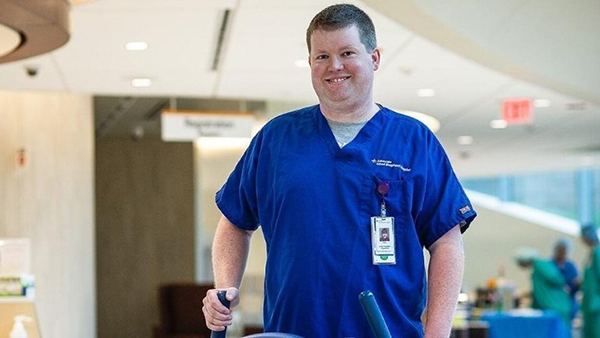

- #Patient transporter job description registration#
- #Patient transporter job description professional#
You'll need life-saving skills in case there is a medical emergency.

You'll often see the same people on a regular basis and get to know them. Some of your passengers will be anxious about their hospital visit and others will lead isolated lives so will value your reassuring manner and the chance to chat. You'll make sure they're safe and comfortable during the journey and arrive on time for their appointment. Returning to the NHS Returning to the NHS menuĪs well as driving, you'll lift and help patients in and out of the vehicle.Training and teaching resources - medical students/doctors.Career advisers and teachers Career advisers and teachers menu.NHS Higher Specialist Scientist Training.
#Patient transporter job description professional#
Continuing professional development (CPD).Developing your health career Developing your health career menu.

#Patient transporter job description registration#

LICENSURE OR CERTIFICATION : Heartsaver CPR (HSCPR or HSFACPR) certification. Must be at least 18 years of age due the nature of the job and the occasional exposure to hazardous working conditions.ĮDUCATION: High school diploma or GED or an equivalent combination of relevant education and experience.ĮXPERIENCE : Six (6) months of transporting experience, preferably in an acute care setting. Transports patients to and from clinical, ancillary, and support department areas as directed.Ĭollects specimens, cultures, non-narcotic medications, orders and requisitions and delivers items to appropriate destinations.Ĭompletes assignment log and obtains authorized signatures for each assignment.ĭrives patient vehicles as a valet service meets patients at hospital entrances and assists with getting them into the hospital. May assist with parking and retrieving patients’ vehicles.Įxhibits excellence in customer service through appropriate attitude and interaction with visitors and staff.Īssists clinical personnel in transferring patients to or from beds, chairs, wheelchairs or stretchers. Complies with established personal protective equipment requirements necessary for protection against exposure to blood and other potentially infectious body fluids, chemical disinfectants, radiation, and other hazardous substances. Retrieves medical records, lab results, supplies, and medications. Transports patients to their in-patient bed and/or to and from other areas such as surgery, therapy, or radiology in a safe and timely manner.


 0 kommentar(er)
0 kommentar(er)
